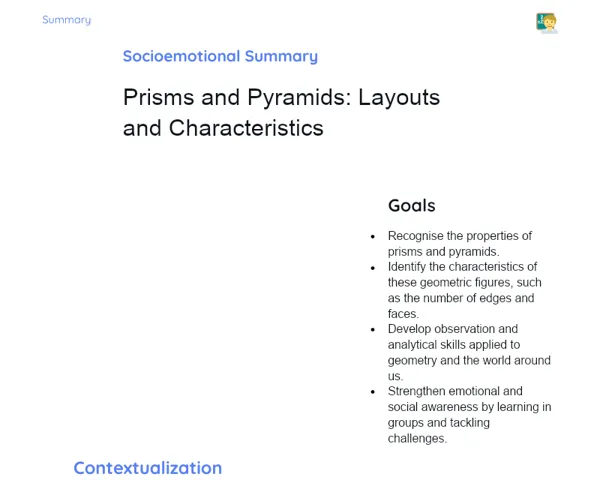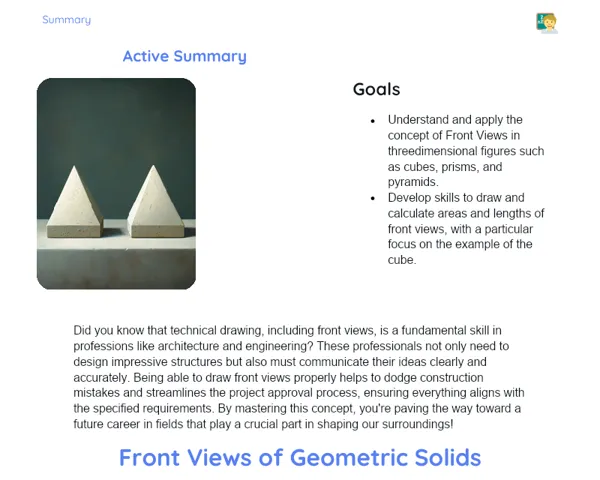Goals
1. Grasp the concepts of angle bisector and perpendicular bisector as fundamental geometric places.
2. Identify the perpendicular bisector and angle bisector in a variety of geometric figures.
3. Recognise how these concepts apply in real-life situations and their relevance in the job market.
Contextualization
The angle bisector and perpendicular bisector are essential concepts in geometry, evident in numerous everyday scenarios. For instance, when designing a road that equally divides two towns or crafting a balanced art piece, these concepts play a vital role. A solid understanding of these principles aids in resolving practical issues and enhances our ability to visualise and construct well-balanced geometric shapes.
Subject Relevance
To Remember!
Angle Bisector
The angle bisector of an angle is the line segment that splits the angle into two equal halves. This principle is key in geometry because the angle bisector includes all points that are equidistant from the sides of the angle.
-
The angle bisector divides an angle into two congruent angles.
-
Every point on the angle bisector is equidistant from the sides of the angle.
-
The angle bisector can assist in geometric construction issues.
Perpendicular Bisector
The perpendicular bisector of a line segment is the line that intersects the segment's midpoint at a right angle. It is a geometric place containing all points that are equidistant from the segment's endpoints.
-
The perpendicular bisector intersects the segment at its midpoint at a right angle.
-
All points on the perpendicular bisector are equidistant from both ends of the segment.
-
The perpendicular bisector is utilised in various practical situations, such as identifying equidistant points in urban designs.
Geometric Places
Geometric places are collections of points that exhibit a certain geometric property. Both the angle bisector and the perpendicular bisector serve as examples of geometric places, being sets of points defined by specific distance characteristics.
-
Geometric places aid in problem-solving and constructing geometric figures.
-
The angle bisector represents a geometric place of points that are equidistant from the sides of an angle.
-
The perpendicular bisector represents a geometric place of points that are equidistant from the segment's endpoints.
Practical Applications
-
Civil Engineering: Applying the angle bisector for planning constructions like bridges and tunnels needing precise divisions.
-
Urban Planning: Using the perpendicular bisector to identify equidistant points in locations, such as during communication tower installations.
-
Graphic Design: Implementing the ideas of angle bisector and perpendicular bisector in logo creation and symmetrical layouts.
Key Terms
-
Angle Bisector: Line segment that divides an angle into two equal parts.
-
Perpendicular Bisector: Line that intersects the midpoint of a segment at a right angle.
-
Geometric Places: Groups of points that share a specific geometric feature.
Questions for Reflections
-
How can a solid understanding of angle bisectors and perpendicular bisectors aid in addressing practical issues in engineering and architecture?
-
In what ways can knowledge of geometric places be employed in graphic design projects?
-
Why is it essential to comprehend angle bisector and perpendicular bisector concepts for urban development?
Designing the Ideal City
Employ the concepts of angle bisector and perpendicular bisector to plan and design an ideal city, ensuring symmetrical divisions and equidistant points.
Instructions
-
Form groups of 4 to 5 students.
-
Utilise graph paper, rulers, compasses, and pencils to draw up the city project.
-
Sketch the main streets using perpendicular bisectors, ensuring the main city structures remain equidistant.
-
Apply angle bisectors to divide the city blocks symmetrically, aiding the layout of residential, commercial, and recreational areas.
-
Present your city project and clarify how you integrated the angle bisector and perpendicular bisector concepts into your design.



